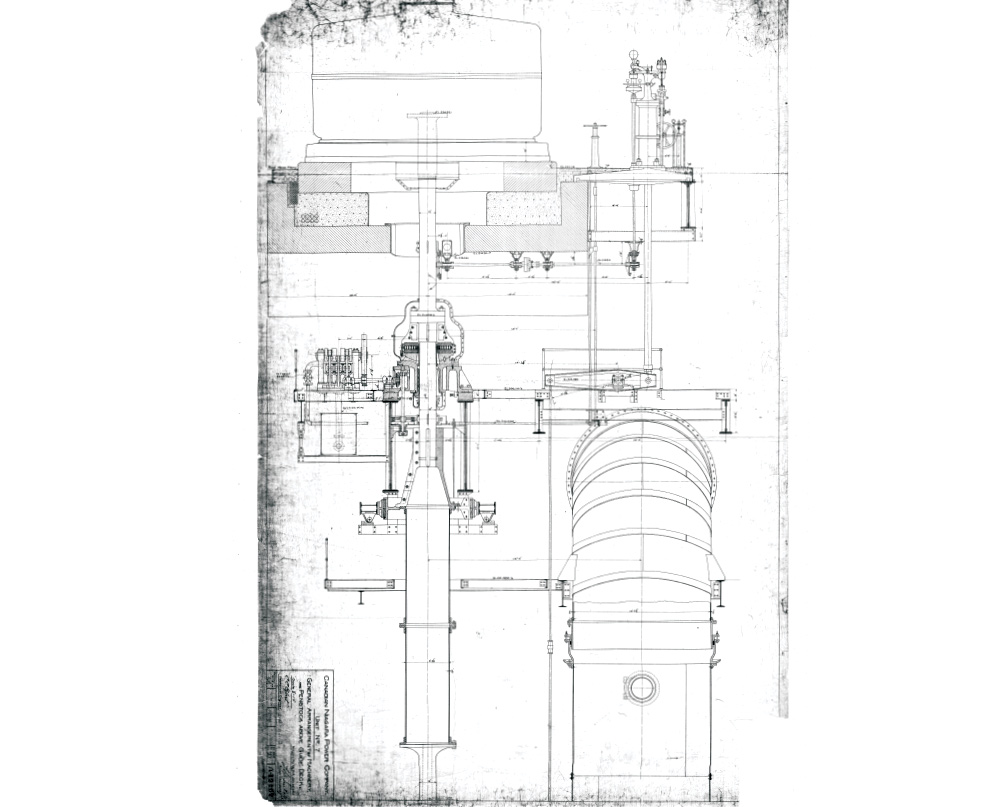The Penstocks
Water regulating system
The penstocks were an important part of the full control system that regulated the amount of water that entered the plant.
The amount of water that flowed through the penstocks was controlled with a headgate. When the headgate was raised, or fully open, water flowed freely through the penstocks. When it was lowered, or slightly closed, the water flow was restricted. The less water that flowed through the penstocks, the slower the turbines rotated.
Common obstructions
In the winter, ice from Lake Erie made its way to the upper Niagara River and caused a buildup in the area above the falls. This caused problems for the hydro stations along the river.
Keeping the penstocks clear of obstructions was essential to keeping the power station running. Any kind of blockage in the penstocks would cause operations to shut down immediately. Although a trash rack was installed in the forebay to prevent obstructions, garbage, tree branches and other debris would occasionally make their way into the penstocks. The most common cause of blockage, however, was ice buildup.
Fixing the ice problems
Over time, changes were made to the plant’s outer and inner forebays to reduce ice buildup. A small canal, known as a sluiceway, was constructed to the left of the forebay to direct ice back out into the river and over the falls. In 1916, the sluiceway was moved from the exterior to the interior, and the outer forebay was extended from 12 feet to 20 feet. This allowed more water to pass underneath any ice on the water’s surface and proceed into the penstocks without issue.
To deal with ice buildup in the outer forebay, a small tugboat, affectionately known as the “Canadian Niagara Power Navy”, was also used to break ice into smaller pieces. It would this by running into the large chunks of ice at full speed. If that failed, small charges of dynamite were used to remove the large accumulations of ice.
In 1964, an ice boom was installed in the Niagara River to hold back some of the ice coming from Lake Erie. The 2.7-kilometre (1.7-mile) long boom consists of floating 30-foot-long steel pontoons and placed between the town of Fort Erie and the city of Buffalo. The ice boom is usually installed when Lake Erie’s water temperature drops to four degrees Celsius (39 degrees Fahrenheit), and uninstalled when ice covers less than 650 square kilometers (250 square miles) of the eastern end of Lake Erie.




